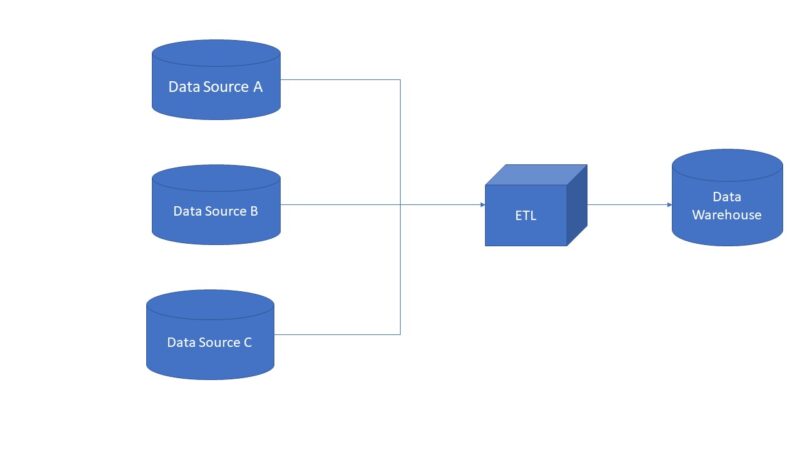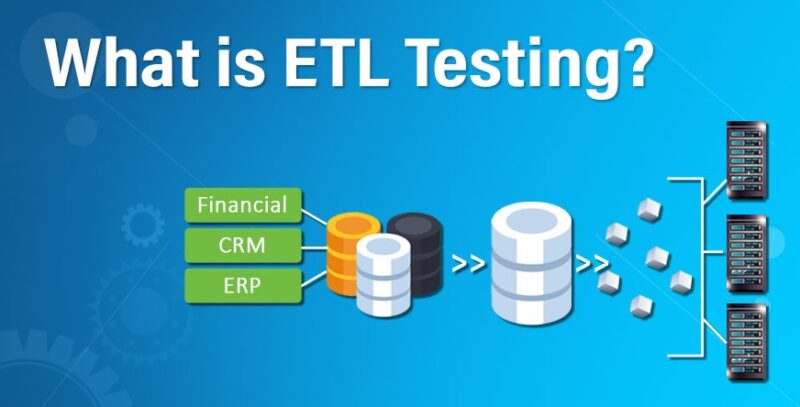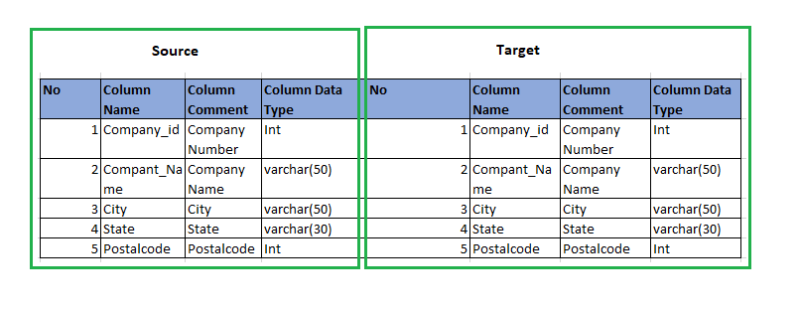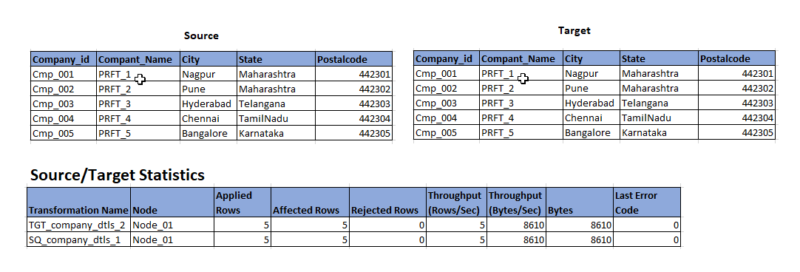ETL testing is a type of testing technique that requires human participation in order to test the extraction, transformation, and loading of data as it is transferred from source to target according to the given business requirements.
Take a look at the block below, where an ETL tool is being used to transfer data from Source to Target. Data accuracy and data completeness can be tested via ETL testing.

What Is ETL? (Extract, Transform, Load)
Data is loaded from the source system to the data warehouse using the Extract-Transform-Load (ETL) process, referred to as ETL.
Extraction defines the extraction of data from the sources (The sources can be either from a legacy system, a Database, or through Flat files).
Transformation defines Data that is transformed as part of cleaning, aggregation, or any other data alterations completed in this step of the transformation process.
Loading defines the load of data from the Transformed data into the Target Systems called Destinations (The Destinations can again be either a Legacy system, Database, or flat file).

What is ETL testing?
Data is tested via ETL before being transferred to live data warehouse systems. Reconciliation of products is another name for it. ETL testing differs from database testing in terms of its scope and the procedures used to conduct the test. When data is loaded from a source to a destination after transformation, ETL testing is done to ensure the data is accurate. Data that is used between the source and the destination is verified at several points throughout the process.

In order to avoid duplicate records and data loss, ETL testing verifies, validates, and qualifies data. Throughout the ETL process, there are several points where data must be verified.
While testing tester confirms that the data we have extracted, transformed, and loaded has been extracted completely, transferred properly, and loaded into the new system in the correct format.
ETL testing helps to identify and prevent issues with data quality during the ETL process, such as duplicate data or data loss.
Test Scenarios of ETL Testing:
1. Mapping Document Validation
Examining the mapping document for accuracy to make sure all the necessary data has been provided. The most crucial document for the ETL tester to design and construct the ETL jobs is the ETL mapping document, which comprises the source, target, and business rules information.
Example: Consider the following real-world scenario: We receive a source file called “Employee_info” that contains employee information that needs to be put into the target’s EMP_DIM table.
The following table shows the information included in any mapping documents and how mapping documents will look.
Depending on your needs, you can add additional fields.

2. DDL/Metadata Check
Validate the source and target table structure against the corresponding mapping doc. The source data type and target data type should be identical. Length of data type in both the source and target should be equal. Will verify that the data field type and format are specified. Also, validate the name of the column in the table against the mapping doc.
Ex. Check the below table to verify the mentioned point of metadata check.
Source – company_dtls_1
Target – company_dtls_2

3. Data Completeness Validation
Data Completeness will Ensure that all expected data is loaded into the target table. And check for any rejected records and boundary value analysis. Will Compare record counts between the source and target. And will see data should not be truncated in the column of target tables. Also, compare the unique value of key fields between data loaded to WH and source data.
Example:
You have a Source table with five columns and five rows that contain company-related details. You have a Target table with the same five columns. After the successful completion of an ETL, all 5 records of the source table (SQ_company_dtls_1) are loaded into the target table (TGT_company_dtls_2) as shown in the below image. If any Error is encountered while ETL execution, its error code will be displayed in statistics.

4. Constraint Validation
To make sure the key constraints are defined for specific tables as expected.
-
- Not Null & Null
- Unique
- Primary Key & Foreign Key
- Default value check
5. Data Consistency Check
-
- The data type and data length for particular attributes may vary in files or tables though the semantic definition is the same.
- Validating the misuse of integrity constraints like Foreign Key
6. Data Correctness
-
- Data that is misspelled or inaccurately recorded.
- Null, non-unique, or out-of-range data
Why Perform ETL Testing?

Inaccurate data resulting from flaws in the ETL process can lead to data issues in reporting and poor strategic decision-making. According to analyst firm Gartner, bad data costs companies, on average, $14 million annually with some companies costing as much as $100 million.
A consequence of inaccurate data is:
A large fast-food company depends on business intelligence reports to determine how much raw chicken to order every month, by sales region and time of year. If these data are inaccurate, the business may order too much, which could result in millions of dollars in lost sales or useless items.
When do we need ETL Testing?
Here are a few situations where it is essential to use ETL testing:
- Following a data integration project.
- Following a data migration project.
- When the data has been loaded, during the initial setup of a data warehouse.
- Following the addition of a new data source to your existing data warehouse.
- When migrating data for any reason.
- In case there are any alleged problems with how well ETL operations work.
- whether any of the source systems or the target system has any alleged problems with the quality of the data
Required Skillset for ETL Tester:
- Knowledge of BI, DW, DL, ETL, and data visualization process
- Very good experience in analyzing the data and their SQL queries
- Knowledge of Python, UNIX scripting
- Knowledge of cloud technologies like AWS, Azure, Hadoop, Hive, Spark
Roles and responsibilities of ETL Tester:
To protect the data quality of the company, an ETL tester plays a crucial role.
ETL testing makes sure that all validity checks are met and that all transformation rules are strictly followed while transferring data from diverse sources to the central data warehouse. The main role of an ETL tester includes evaluating the data sources, data extraction, transformation logic application, and data loading in the destination tables. Data reconciliation is used in database testing to acquire pertinent data for analytics and business intelligence. ETL testing is different from data reconciliation. It is used by data warehouse systems.
Responsibilities of an ETL tester:
- Understand the SRS document.
- Create, design, and execute test cases, test plans, and test harnesses.
- Test components of ETL data warehouse.
- Execute backend data-driven test.
- Identify the problem and provide solutions for potential issues.
- Approve requirements and design specifications.
- Data transfers and Test flat files.
- Constructing SQL queries for various scenarios, such as count tests.
- Inform development teams, stakeholders, and other decision-makers of the testing results.
- To enhance the ETL testing procedure over time, incorporate new knowledge and best practices.
In general, an ETL tester is the organization’s data quality guardian and ought to participate in all significant debates concerning the data used for business intelligence and other use cases.
Conclusion:
Here we learned what ETL is, what is ETL testing, why we perform ETL testing when we need ETL testing, what skills are required for an ETL tester, and the Role and responsibilities of an ETL tester.
Happy Reading!


Fantastic explanation of ETL testing! The real-world examples and the “Why Perform ETL Testing?” section emphasize the critical importance of ETL testing in ensuring data accuracy and preventing costly errors. This blog is valuable for both beginners and experienced professionals.
Kudos to the author for delivering such a fantastic breakdown of ETL Testing. The ‘Why Perform ETL Testing?’ section is a testament to its importance, and the inclusion of real-world examples elevates this blog to a must-read for both ETL testing novices and professionals.
Kudos to the author for delivering such a fantastic breakdown of ETL TESTING. The ‘Why Perform ETL Testing?’ section is a testament to its importance, and the inclusion of real-world examples elevates this blog to be a must-read for both ETL testing novices and professionals.